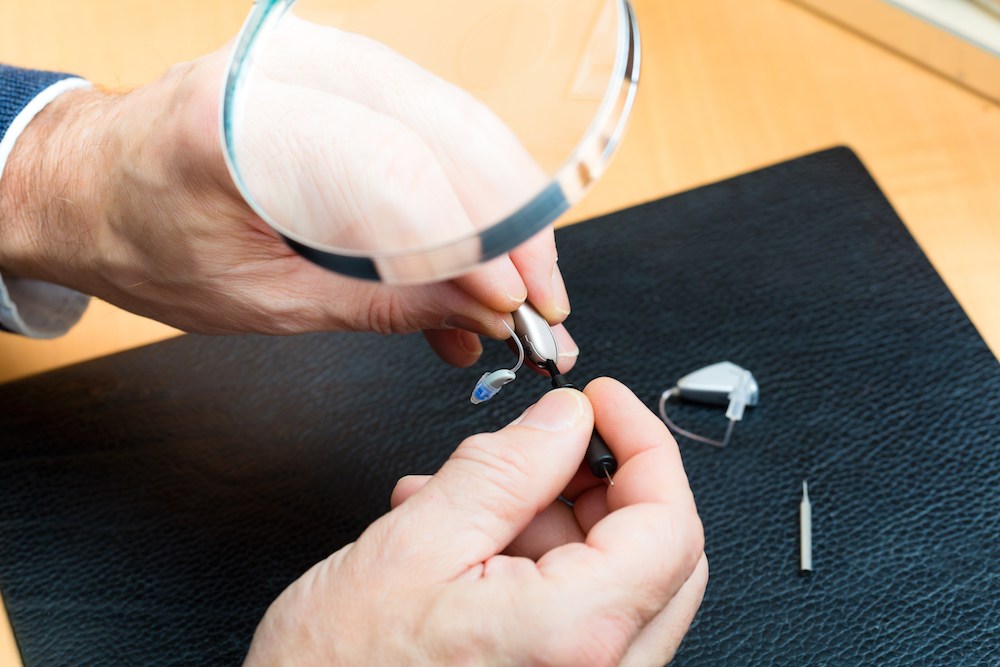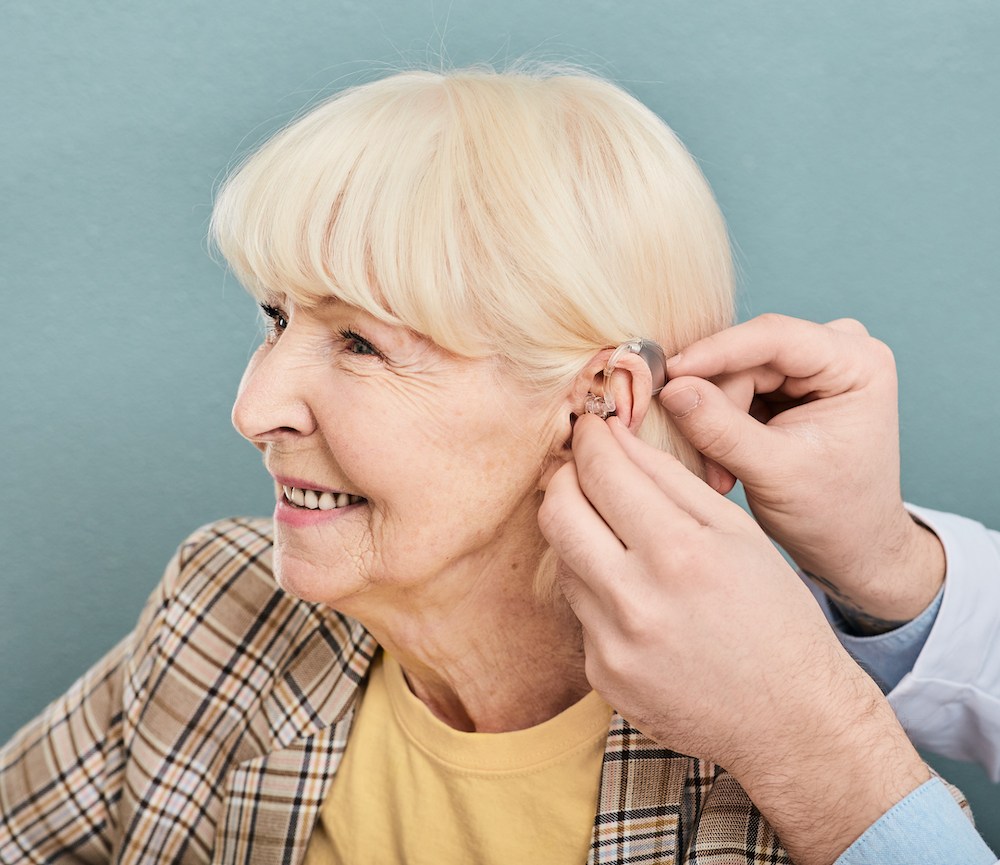The Impact of Autumn Weather on Hearing Aids
Autumn weather brings changes that can affect how well your hearing aids

By: admin | February 18, 2025
Living with hearing loss can make social situations more difficult, but it doesn’t mean you have to lose connections with friends and family. Many people have trouble following conversations in noisy places like restaurants, family gatherings or work meetings. This can be frustrating and sometimes make socializing feel difficult. However, there are ways to make these situations easier and stay involved in social settings. Whether you are newly experiencing hearing loss or have been managing it for years, using effective strategies can help you stay connected.
Social settings can be more challenging for individuals with hearing loss because they often involve multiple conversations and background noise. Unlike quiet spaces where focusing on one speaker is easier, social gatherings are filled with overlapping voices, music and other sounds that can make it harder to follow a conversation. The fast pace of discussions and frequent topic changes can also require extra effort to keep up. In these environments, separating one voice from another takes more concentration, especially when background noise is constant.
Background noise can have an impact on conversations, making it harder to hear and understand speech. In places like restaurants, crowded events or busy streets, voices can blend with surrounding sounds, making it difficult to focus on a single speaker. This can cause people to miss important details, ask others to repeat themselves or struggle to keep up with the conversation. For those with hearing loss, background noise can make communication even more challenging, requiring extra effort to follow along.
Certain environments can make background noise more noticeable. Hard surfaces, like tile floors and glass windows, can cause sound to bounce around, making voices less clear. Loud music, dishes or multiple conversations happening at once can add to the difficulty. Even individuals without hearing loss may find themselves raising their voices or leaning in closer to be heard. In these situations, reducing background noise – like turning down music or moving to a quieter area – can make conversations much easier.
Where you sit or stand during a conversation can make a difference in how well you hear and understand others. Positioning yourself close to the speaker helps reduce background noise and makes their voice clearer. Sitting with your back to a wall can also help block out extra sound, making it easier to focus on the conversation. In group settings, choosing a spot where you can see everyone’s faces allows you to pick up on visual cues like lip movements and facial expressions, which can improve understanding.
Lighting also plays an important role in communication. A well-lit space makes it easier to see a speaker’s face, which helps with lip-reading and recognizing facial expressions. Poor lighting, like dim restaurants or bright lights shining from behind, can make it harder to see these details. Positioning yourself so the light is on the speaker’s face, rather than behind them, can make a conversation much clearer. Natural lighting or soft indoor lighting often works best for visibility.
By paying attention to both positioning and lighting, conversations can become easier and more enjoyable. Simple adjustments can improve communication for everyone. These small changes are especially helpful for individuals with hearing loss.
Lip reading is a useful skill that can improve understanding during conversations. It involves paying close attention to a speaker’s mouth movements, facial expressions and body language to help interpret their words. This can be especially helpful in noisy environments where hearing every word clearly may be difficult.
In social settings like parties or gatherings, visual cues can support what you hear. Watching the way a person’s lips move, along with their facial expressions and gestures, provides extra context that makes speech easier to follow. These small details can help fill in any words that might be unclear due to background noise or fast-paced conversations. By focusing on the speaker’s face, you can make communication smoother and more effective.
Visual cues are more than just lip reading – they also include gestures and body language. For example, a wave can signal goodbye, and a nod can show agreement, adding meaning to spoken words. These nonverbal signals help make conversations clearer, especially in noisy environments. Over time, paying attention to both speech and body language can make communication easier and more natural.
Wearing hearing aids can improve communication in social settings by making speech clearer and reducing background noise. Many modern hearing aids come with features designed specifically for these situations. Directional microphones help focus on the voices in front of you, while noise reduction technology minimizes distracting background sounds. Some models also have settings that automatically adjust based on your environment, making it easier to transition between quiet and noisy spaces. These features allow you to stay more engaged in conversations and feel more comfortable in social gatherings.
To get the most out of your hearing aids, it’s important to use the right settings for different situations. Many devices have speech enhancement features that make it easier to hear voices, even in crowded places. Some also connect to smartphones or assistive listening devices, providing additional support in challenging environments. Regular adjustments and check-ups with an audiologist can help ensure your hearing aids are set up for your needs, making sure you stay connected in social settings.
Assistive listening devices are tools designed to help those with hearing loss better engage in social interactions. They work by capturing sound from the source and transmitting it directly to your hearing aid. This direct line of sound transmission reduces the interference of background noise, making it easier for you to understand conversations even in noisy environments.
There’s a wide range of assistive listening devices available today, each with its own set of features. Some are designed for use in specific situations like watching TV or attending lectures, while others can be used more generally across different settings. A visit to your audiologist can help identify which device is best suited for your needs.
Being clear and direct about your hearing needs can make conversations much easier. Letting others know that you may need them to speak a little louder or slower helps set expectations and improves communication. Most people are willing to adjust their speaking style if they understand what helps. If you rely on lip reading or other visual cues, ask the speaker to face you while talking. This simple request can make a big difference in understanding speech, especially in noisy environments.
It’s also important to ask for repetition when needed. If you miss part of a conversation, don’t hesitate to ask someone to repeat themselves. Asking for clarification ensures you stay engaged in the conversation and understand everything clearly. People are happy to repeat themselves when they know it helps. By being open about your hearing needs and requesting small adjustments, you can make social interactions smoother and more enjoyable.
Public spaces can sometimes feel challenging for those with hearing loss, especially when it comes to following conversations or understanding others. There may be concerns about missing parts of a discussion or not responding as expected. However, there are ways to navigate these situations more comfortably and stay engaged in social settings.
Familiarize yourself with the layout of public places you frequently visit. Knowing where quieter areas are can provide a much-needed break when noise levels become too high. Plan ahead for different situations by either wearing hearing aids or using assistive listening devices that can help enhance your hearing in noisy environments. It’s always ok to ask for accommodations, like lowering background music or having someone face you while speaking, to make conversations easier to follow.
Building confidence in managing hearing loss in social situations takes time and practice. Using strategies like choosing the right seating or using assistive devices can help improve communication over time. Small adjustments and consistent effort can make social interactions feel more natural and comfortable.
Progress doesn’t happen all at once, and it’s normal to adjust your approach as you go. If a conversation feels challenging at first, patience and practice can make a difference. Over time, you’ll find strategies that work best for you, making social settings easier to navigate with confidence.
Audiologists can provide personalized advice and solutions to help you engage better in social interactions. They can recommend suitable hearing aids that amplify sounds while minimizing background noise, acting as your personal volume control. They also provide training on how to use these devices effectively in different settings.
Beyond technology, audiologists offer guidance on communication strategies. These might include learning how to read lips or understanding body language cues better. With their help, managing social hearing loss becomes a collaborative effort that helps you to fully participate in life’s social moments.
Scheduling regular hearing check-ups is an important part of managing hearing loss and staying active in social settings. Over time, your hearing needs may change, and routine visits to an audiologists can help ensure that your hearing aids or other devices are working properly. Adjustments to your hearing aids or trying new technology can make conversations clearer and reduce the effort needed to follow discussions, especially in noisy environments.
Regular check-ups also give you the chance to discuss any challenges you’re facing in social situations. An audiologist can offer advice on improving communication, suggest new strategies, or recommend assistive devices that may help. By keeping up with your hearing health, you can stay engaged in conversations, feel more confident in social settings, and continue enjoying time with friends and family.
In the end, managing hearing loss in social settings is about learning to adapt and finding strategies that work best for you. This can be made easier with professional guidance and support. Support is available to help you manage hearing challenges and stay connected in social settings. Audiologists can provide guidance and solutions to make conversations easier and more comfortable. Taking steps to improve communication can make social interactions more manageable. With the right strategies and tools, you can continue to engage with others and be part of meaningful conversations.
If you’re looking for personalized advice or need help choosing the right assistive devices, At Professional Hearing Aid Associates, our audiologists are here to help find the right solutions for your specific hearing needs. You can call our office in Topeka, KS, at (785) 940-4101.

Autumn weather brings changes that can affect how well your hearing aids
By: admin | October 20, 2025

Good hearing lets you catch the punchline of a joke, hear your
By: admin | July 29, 2025

Spring brings warmer temperatures, afternoon rain showers and higher
By: admin | June 20, 2025
